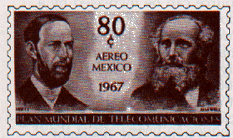
James Clerk Maxwell
Speed of Light, Eclipses, Phases
Demos to Prepare:
Rectilinear Propagation:
Pinhole Cameras
Reflection:
Corner Reflector.
Bicycle Corner Reflector.
Navy Signaling Mirror.
Big Navy Mirror

James Clerk Maxwell
Speed of Light, Eclipses, Phases
Demos to Prepare:
Rectilinear Propagation:
Pinhole Cameras
Reflection:
Corner Reflector.
Bicycle Corner Reflector.
Navy Signaling Mirror.
Big Navy Mirror
Rectilinear Propagation: Light travels in straight lines.
The Pinhole Camera:
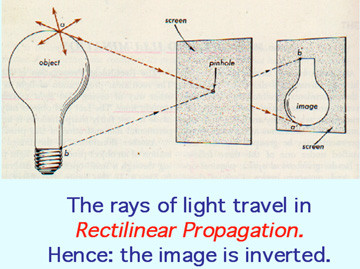
Inverse Square Law:
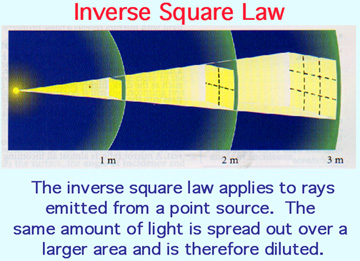
Reflection: The angle of incidence = the angle of reflection.

Refraction: The bending of light as it changes media.

Diffraction: The spreading of waves as they pass through a slit.
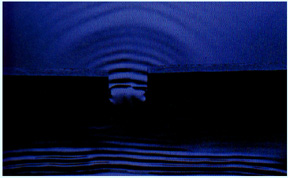
Interference: Waves adding and cancelling each other.

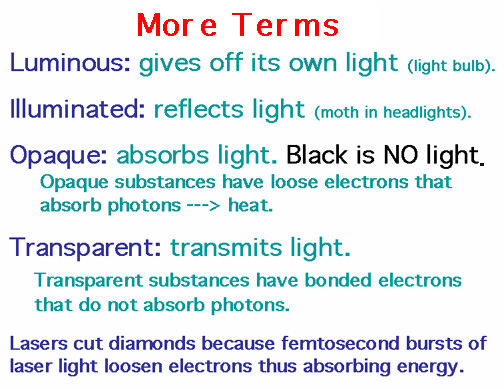
Intensity of Light: the energy measured in candelas.
Illumination: (luminous flux) is the result of intensity and distance (inverse square law).

Light has mass: 2 kg of light strike the earth/second.
Doppler Effect: The color of light is changed due to relative motion between the source and observer.

The Spectral Lines in the stars show the Doppler Shift due to relative motion with the earth.
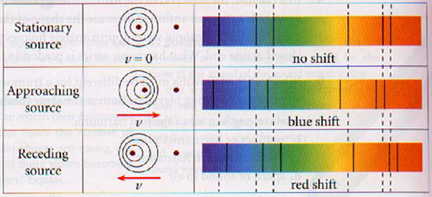
The lines are caused by electron energy level changes in the atoms (the goose chart).
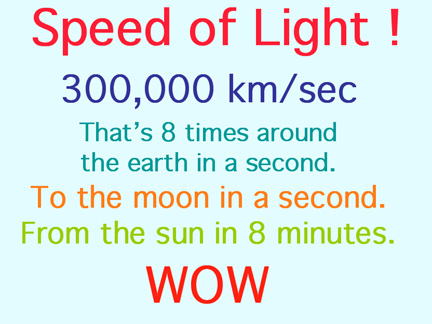
Measuring the Speed of Light: 3 X 108 meters/second
..... Galileo’s attempt:
.......... Lanterns on hilltops. Result: The light is too fast, or people too slow.

We know the diameter of the Earth's orbit and d = rt, so r = d/t .
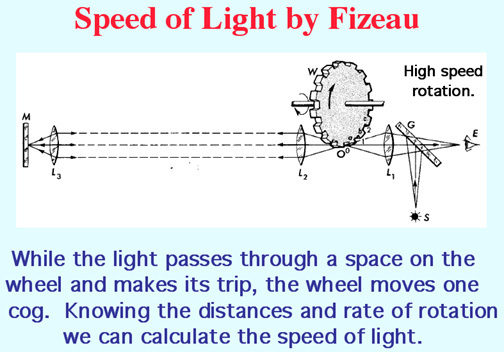

Eclipses:
In an eclipse, something is in the way. Solar eclipse, the moon blocks the sunlight. Lunar eclipse, the earth blocks the sunlight and the moon is in the shadow.
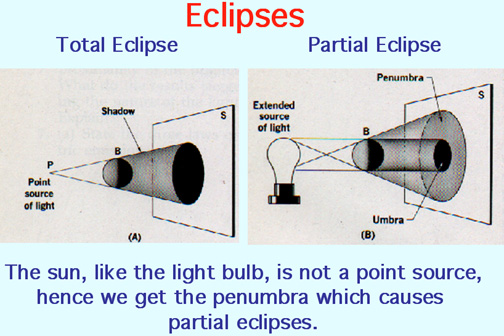
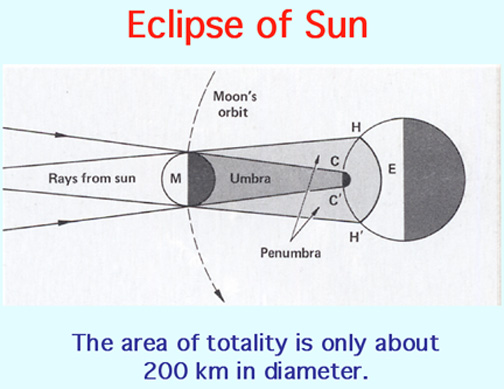
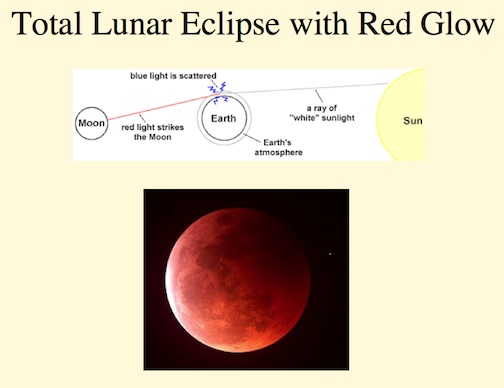
The Moon is visible and glows red because the
atmosphere of the Earth bends the light and
passes the long wave red light and scatters
the short wave blue light.
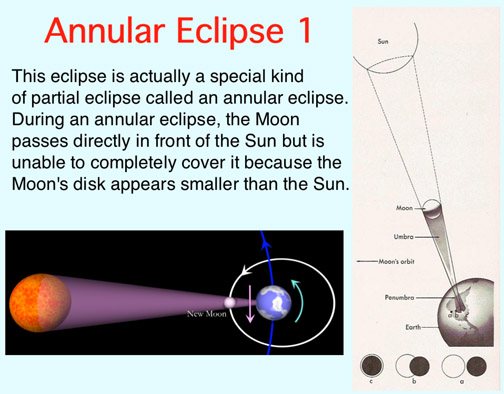
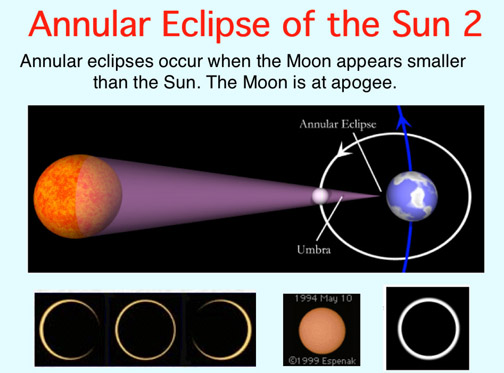
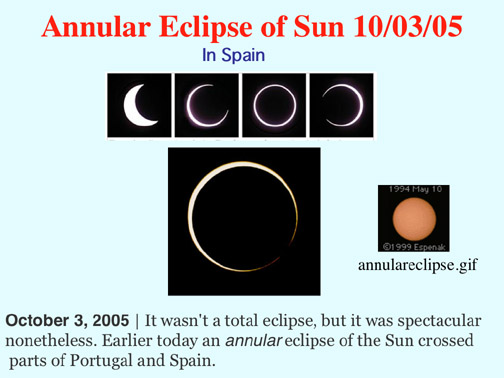

Why Eclipses Are So Rare

There are only two positions where the tilted orbits line up. Above shows the transit of Venus across the sun. A very rare occurrence.
Phases of the Moon:
The phases are what we can see according to where the moon is located and from where we are observing (geometry!).

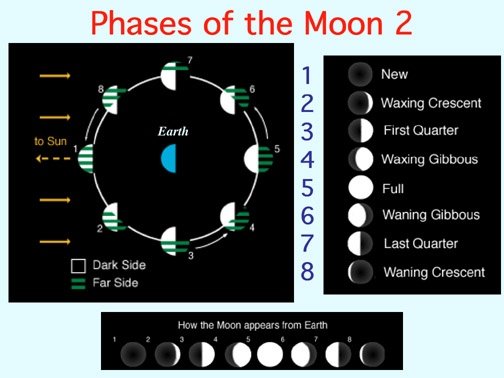

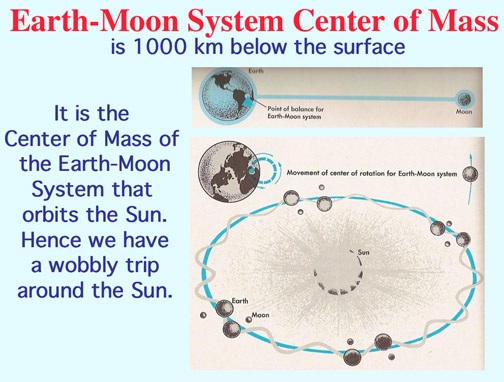


The Void: What is it?
The American Heritage Dictionary defines vacuum:
1. a. Absence of matter. b. A space empty of matter. c. A space relatively empty of matter. d. A space in which the pressure is significantly lower than atmospheric pressure.
2. A state of emptiness; a void.
3. A state of being sealed off from external or environmental influences; isolation.
So...
Is there a vacuum in the Crookes Radiometer?
Is there a vacuum between the atoms of a gas?
Is there a vacuum in space where the density of matter is one atom per cubic meter?
Is light matter? If so can there be a vacuum in space?
Is there light between photons?
Whew! The argument goes on.